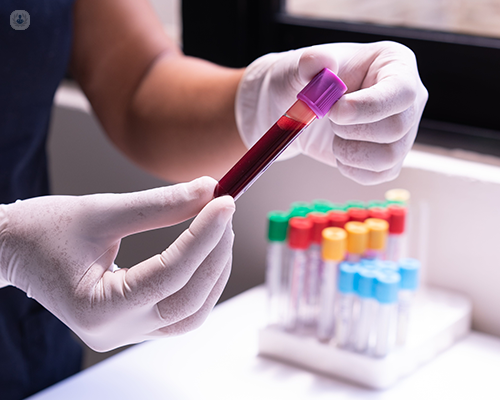Uric acid
What is analysed?
Uric acid is a byproduct of the breakdown of purines, which are substances found in certain foods and body tissues. Uric acid usually dissolves in the blood, travels to the kidneys, and is excreted in urine. The uric acid test measures uric acid levels in the blood.

What does the result mean?
The result indicates the concentration of uric acid in the blood.
Why conduct the analysis?
The uric acid test is conducted to diagnose and monitor conditions related to uric acid metabolism. The analysis also identifies and diagnoses disorders like gout, where high uric acid levels can lead to the formation of crystals in the joints, causing pain and inflammation.
When to conduct the analysis?
The uric acid test is conducted when symptoms of gout, such as joint pain and swelling, are observed. The analysis may also be part of routine health check-ups for patients with risk factors, such as a family history of gout or kidney disease.
What sample is required?
A blood sample is required for the analysis of uric acid. The blood is drawn from a vein, usually in the arm.
Is any prior preparation necessary?
Patients should fast for 8-12 hours before the blood sample is taken. In addition, patients should also inform a healthcare professional about any medications being taken, especially diuretics, as they can affect uric acid levels.
How is it performed?
The collected blood sample is sent to a laboratory, where it is analysed using enzymes or colorimetric methods to quantify uric acid levels in the blood.
What are the normal values?
| Age group | Normal uric acid levels (mcg/mL) |
|---|---|
| Children | 2.0 - 5.5 |
| Adults | 3.4 - 7.0 (males) and 2.4 - 6.0 (females) |
What does having altered values mean?
- Elevated levels: Raised uric acid levels indicate gout, kidney disease, metabolic disorders, or conditions affecting the breakdown of purines.
- Low levels: Low uric acid levels indicate certain medications or conditions affecting liver function.